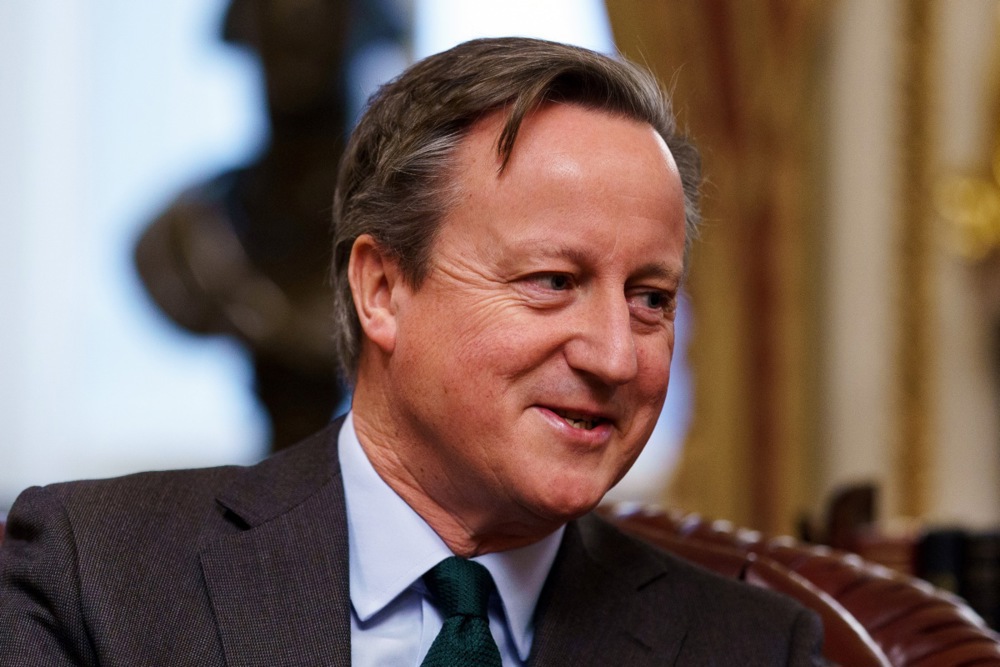As the United States begins to emerge from a critical election, the weight of domestic polarisation is more than a national issue: it is a force with profound implications for the country’s role on the global stage. History offers a sobering reminder: moments of internal division in America have often bled into its foreign policy, narrowing the range of strategic options, undermining global credibility, and weakening long-term commitments. Today, the level of division over economic policy, social issues, and the direction of America’s engagement abroad threatens to completely overthrow the stability and coherence required for the US to act effectively in a world on the brink of chaos.
This tension – between the demands of a fractured domestic landscape and the challenges of an unstable world – is not new. Just in the 20th century, pre-WWII isolationism, the Civil Rights Movement amid Cold War pressures, the Vietnam War, and the Iraq War each reflect episodes when internal divisions reshaped America’s international posture, impacting its influence and exposing the risks of a nation unable to align its internal and external priorities.
The interwar years exemplify the constraints imposed by domestic isolationism – leading to internal reluctance and strategic delays. Scarred by the toll of World War I, a significant portion of the American public resisted further entanglement in European conflicts. Wilson, the architect of the League of Nations, was unable to persuade his own country to join it.
This isolationist sentiment thrived in 1930s and found strong advocates in Congress, creating legislative barriers to military engagement and hindering President Franklin D. Roosevelt’s early attempts to support Allied powers against the Axis threat. America delayed its direct involvement, which allowed Germany and its Axis allies to consolidate their hold over Europe in the first years of the war.
While Pearl Harbor shattered isolationist resistance, the cost of delay had already been paid in terms of missed opportunities for early intervention. In an eerie parallel to some of today’s geopolitical dynamics, this episode underscored the dangers and costs of a bitterly divided national outlook on foreign policy. America was ultimately drawn into the conflict, but only after critical opportunities for effective early action had been lost.
The civil rights struggle in the 1950s and 1960s that unfolded against the backdrop of the Cold War provides another useful parallel to today, from a slightly different angle. The civil rights movement exposed the contradiction between America’s proclaimed values and some of the harsh realities of genuine racial inequality at that time.
This cut across the country’s foreign policy: while the US sought to position itself as a beacon of democracy and freedom in opposition to totalitarian Soviet communism, segregation and racial violence within its borders weakened this moral stance. The Soviets – like the Russians today, with their critique of a Godless, decadent West – worked tirelessly to exploit this dissonance in the international arena. They highlighted America’s racial inequities to undermine its credibility, particularly among newly decolonized nations in Africa and Asia. In our days, the same kind of struggle is underway, again, over the loyalties of the “Global South”.
The civil rights upheaval ultimately subsided as stronger civil rights protections were introduced – though, of course, its root conflict has never disappeared. America’s political class eventually acknowledged more fully that domestic unrest was compromising their diplomatic efforts. This troubled history of the 1960s, in particular, highlighted a critical weakness that will always be present in US strategy: when domestic policies and global ideals are at odds, America’s influence is diminished. Today, a different kind of authoritarian zealotry – that of “progressive liberalism”, with all of its culture-war monstrosities – is at play, undermining the US’s standing in the world. These excesses, too, will have to be brought under control if America is to regain its prestige and moral ascendancy among the community of nations.
Of course, nowhere was the impact of domestic polarisation on foreign policy more evident than during the Vietnam War. As opposition grew from the mid-1960s, driven by a mix of anti-“imperialist” sentiment, generational dissent, and public disillusionment, the US found itself fighting not only in Southeast Asia but also against a mounting tide of protests and civil unrest at home. The initial support for containing communism eroded quickly as American lives were lost in a conflict without a clear path to victory. The government’s hand was increasingly forced by domestic pressures, compelling it to limit further military escalation, negotiate peace under unfavourable conditions, and eventually withdraw.
Vietnam has become the powerful, classic example of how vicious internal discord can curtail or even thwart America’s strategic ambitions. Watergate didn’t help either. But the key point is that with a fractured public opinion and anti-war protests impacting political decisions, policymakers could no longer maintain a clear strategic direction or persist with a costly military approach. The result was not only a lost war but a dented faith among Americans in their country’s international commitments, setting a precedent for domestic distrust in interventionist policies that has lingered through subsequent conflicts.
Finally, the Iraq War offers a more recent case where internal divisions eroded America’s foreign policy cohesion. Initially launched with broad bipartisan support in 2003, the war quickly turned into a source of deepening political polarization as its prolonged costs and uncertain objectives became apparent. Opposition intensified not only among the public but within Congress, where partisan divides over the war grew sharper. These rifts hampered the ability to formulate a unified strategy, ultimately limiting the US’s capacity to commit to a clear endgame. The 2007 troop surge under General Petraeus helped restore the situation, but overall the Iraq campaign has entered the history books as a failure.
The war’s unpopularity contributed to a re-emerging scepticism around interventionist policies, reshaping the bipartisan consensus that had once defined America’s approach to foreign conflicts. Once again, the Iraq experience – to which we can add that of Afghanistan, another failed American-led adventure – provided a textbook example of how internal division can not only constrain a specific policy but also recalibrate the national strategic orientation for decades to come. The shadow of Iraq is still with us. It deeply affects any debate over foreign intervention, with US public reluctance to support large-scale military engagements abroad – a hesitancy rooted, first and foremost, in the legacy of that formative conflict for the “Millenial” generation.
Today, as the United States grapples with extreme political polarization – irrespective of the election results – it faces the prospect of strategic paralysis at a time when a cohesive and decisive foreign policy is essential to counterbalance rivals like China and Russia. Domestic divisions over trade policy, military spending (and posture), and alliances are again hampering US foreign policy, weakening American influence with friends, allies and non-aligned nations, and making long-term commitments appear precarious. Indeed, the Europeans already appear to have decided that no matter who is in the White House come 20th January 2025, America cannot be counted upon as before.
If US domestic polarisation continues to escalate – and there is still room for more of that – without some kind of decisive political resolution of one sort or another, American foreign policy risks entering a historic downturn. In this case, it will be ever more constrained by internal discord and dysfunction, and unable to project a consistent strategy that can command the confidence of allies and the fear of adversaries.
Just as interwar isolationism, civil rights struggles, Vietnam and Iraq each left a lasting impact, the current era of division could deepen America’s strategic woes. An incoherent foreign policy that is does not balance means (including allies) with ends, risks not only further weakening the US’s global standing but emboldening increasingly lethal rivals who perceive the US as too fractured and disoriented to present an implacable obstacle to their own ambitions of regional and global mastery.
The United States, historically a stabilizing force in global affairs who has kept the order for over 80 years, now faces its ultimate dilemma as it changes presidents: it must either overcome its internal divisions or reconcile with the limits those divisions impose on its foreign policy. As past crises have shown, failing to address these rifts risks transforming the world’s leading power into a hesitant, reactionary force, struggling to maintain the influence it once wielded with confidence. And then we would be in completely uncharted territory.
Gabriel Elefteriu is deputy director at the Council on Geostrategy in London and a fellow at Yorktown Institute in Washington, D.C.






Trump’s foreign policy scared Russia and China, Harris’ policy never would